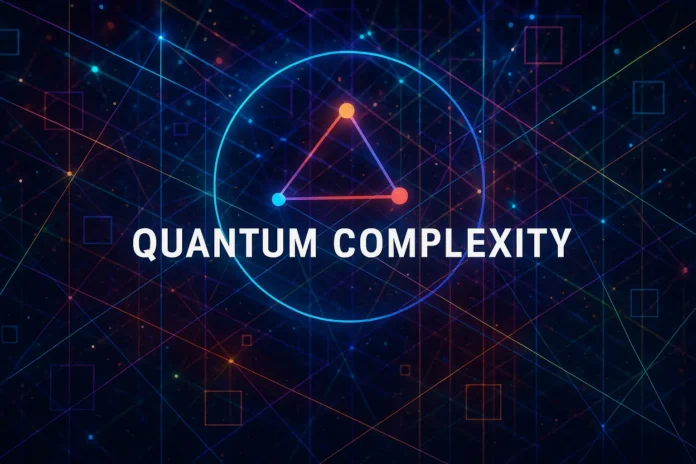Table of Contents
- Introduction
- Motivation: Fault-Tolerant Universal Quantum Computation
- Clifford Gates and the Gottesman-Knill Theorem
- The Limitation of Clifford-Only Computation
- Magic States: Definition and Examples
- The T Gate and Its Role in Universality
- Magic State Injection
- The Need for Distillation
- Distillation Protocols Overview
- The Bravyi-Kitaev 15-to-1 Protocol
- Resource Analysis and Overhead
- Thresholds and Noise Models
- State Injection Circuit Design
- Fault Tolerance and Code Compatibility
- Optimizing Distillation with Better Codes
- Magic States for Other Non-Clifford Gates
- Experimental Demonstrations and Progress
- Challenges in Scalability and Efficiency
- Future Directions and Compiler Integration
- Conclusion
1. Introduction
Magic state distillation is a foundational technique in quantum computing that enables universal, fault-tolerant quantum computation using only Clifford gates and specially prepared resource states called magic states. These states act as a bridge to implement non-Clifford gates that complete the universal gate set.
2. Motivation: Fault-Tolerant Universal Quantum Computation
Clifford gates alone cannot realize universal quantum computation. To achieve universality, non-Clifford gates like the T gate must be added. However, implementing non-Clifford gates directly in error-corrected systems is challenging. Magic state distillation provides a fault-tolerant pathway to bridge this gap.
3. Clifford Gates and the Gottesman-Knill Theorem
Clifford gates include the Hadamard (H), Phase (S), and CNOT gates. The Gottesman-Knill theorem states that any quantum circuit composed only of Clifford gates can be efficiently simulated on a classical computer. Thus, they are not computationally universal on their own.
4. The Limitation of Clifford-Only Computation
Without a non-Clifford element, quantum computation with Clifford gates cannot exceed classical power. Adding a non-Clifford gate like the T gate lifts this limitation, enabling true quantum advantage.
5. Magic States: Definition and Examples
A magic state is a quantum state that, when combined with Clifford gates and measurements, enables universal computation. One of the most well-known examples is the T-state:
This state allows indirect implementation of the T gate.
6. The T Gate and Its Role in Universality
The T gate (also called \( \pi/8 \) gate) is defined as:
Together with the Clifford group, the T gate forms a universal set for quantum computation.
7. Magic State Injection
To apply a T gate fault-tolerantly, a magic state is prepared offline and injected into the computation through a teleportation-like gadget involving ancillary qubits, CNOTs, and measurements.
8. The Need for Distillation
In practice, magic states are noisy and imperfect. Distillation is the process of converting many noisy magic states into fewer, higher-fidelity ones using only Clifford operations and measurements.
9. Distillation Protocols Overview
Magic state distillation protocols use error-detecting codes to isolate and reject faulty states. They amplify fidelity at the cost of overhead. Examples include:
- Bravyi-Kitaev 15-to-1
- Meier-Eastin-Knill 10-to-2
- Triorthogonal codes
10. The Bravyi-Kitaev 15-to-1 Protocol
This protocol consumes 15 noisy T-states and produces one with improved fidelity. It uses a [[15,1,3]] Reed-Muller code to detect errors through stabilizer measurements. If no error is detected, the output is accepted.
11. Resource Analysis and Overhead
Magic state distillation is resource-intensive, consuming many qubits and operations. Overhead is measured in number of input states, depth, and classical processing required to verify outputs.
12. Thresholds and Noise Models
A threshold exists below which the input fidelity must lie for distillation to be effective. These thresholds depend on the protocol and underlying noise model (e.g., depolarizing, dephasing).
13. State Injection Circuit Design
Injection circuits prepare and incorporate magic states into computations. They include:
- Bell pair creation
- CNOT gates
- Measurement and classical feedforward
Proper design ensures minimal propagation of errors.
14. Fault Tolerance and Code Compatibility
Distillation must be performed within the error-correcting code used in the quantum computer (e.g., surface code). Compatibility between injection circuits and code constraints is crucial for fault-tolerant execution.
15. Optimizing Distillation with Better Codes
Improved codes, such as triorthogonal codes, reduce the number of input states or increase fidelity per round. Nested and multi-level distillation also optimize trade-offs between space and time.
16. Magic States for Other Non-Clifford Gates
While T-states are the most common, magic states can be tailored for other gates like:
- Toffoli (controlled-controlled-NOT)
- Controlled-S
- Non-Clifford rotations
These expand the repertoire of efficient gate synthesis.
17. Experimental Demonstrations and Progress
Small-scale experiments on superconducting qubits and ion traps have demonstrated state injection and distillation. Full protocols remain too resource-heavy for near-term devices but are under active study.
18. Challenges in Scalability and Efficiency
Key bottlenecks include:
- High qubit overhead
- Depth of distillation circuits
- Precision in classical feedback
These must be addressed for scalable quantum computing.
19. Future Directions and Compiler Integration
Compiler-level integration of magic state synthesis and distillation is a major area of development. Automated gate decompositions and error-aware circuit rewriting will play a key role in practical deployments.
20. Conclusion
Magic state distillation is a cornerstone of universal, fault-tolerant quantum computing. By enabling non-Clifford operations through a standardized and robust procedure, it bridges the gap between theoretical universality and experimental limitations. Its evolution continues to shape the design and feasibility of large-scale quantum systems.


